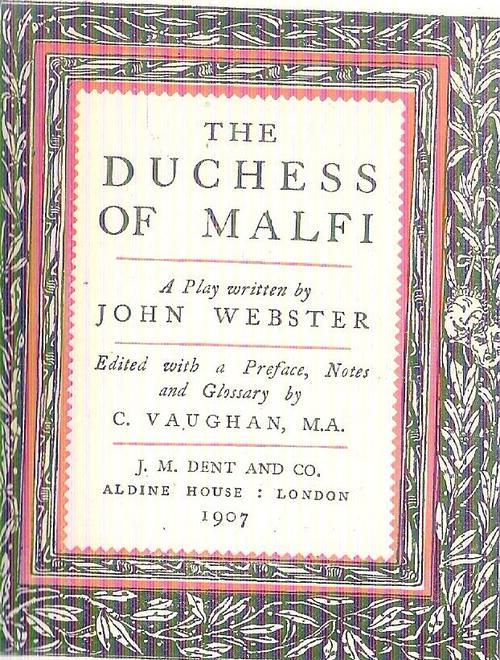

Hora – Si quid – Candidus Imperti si non his utere mecum. The perfect and exact Coppy, with diverse things printed, that the length of the Play would not beare in the Presentment. As it was Presented privatly, at the Black-Friers and publiquely at the Globe, By the Kings Majesties Servants. The text on it, centred and in a variety of lettering, reads: ‘The Tragedy of the Dutchesse of Malfy. This is a colour photograph of a printed title page.

This course will examine how Webster represents his heroine’s marriage for love, which goes against the wishes of her aristocratic family with disastrous consequences. The play also contains an extremely enigmatic and sinister villain. At the centre of The Duchess of Malfi stands a heroine rather than a hero, which is fairly unusual in Renaissance tragedy. Historians of the period often prefer the term ‘rank’ on the grounds that it better captures relationships in a highly stratified society where the vertical ties of patronage and deference were strong and class consciousness poorly developed in social groups below the level of the ruling elite. Webster’s focus in his tragedy of love is class, or rank, to use a more authentically early modern term. Webster’s play is a tragedy about a forbidden love, more specifically a forbidden marriage, which leads ultimately to the deaths of the lovers and many others. The Duchess of Malfi does indeed have ‘plenty of blood’, but this is nothing unusual in Renaissance tragedies. This course will look at Webster’s most well-known play, The Duchess of Malfi, and consider some possible reasons for the play’s continued prominence in the twenty-first-century theatre repertoire. Shakespeare had many gifted colleagues in the play-writing business, but only two – Webster and Christopher Marlowe (1564–1593) – are graced with roles in this enormously popular mainstream movie about the late sixteenth-century theatre scene. Yet it also testifies to the enduring popularity of those plays. This affectionate but crude caricature testifies to Webster’s reputation for writing dark and violent plays. He makes a brief appearance in the 1998 film Shakespeare in Love as a boy who tortures mice, spies on Shakespeare’s love-making, and feels inspired to take up the pen himself after seeing Shakespeare’s blood-soaked revenge tragedy, Titus Andronicus. John Webster ( c.1580– c.1634) was Shakespeare’s contemporary, though sixteen years younger.


 0 kommentar(er)
0 kommentar(er)
